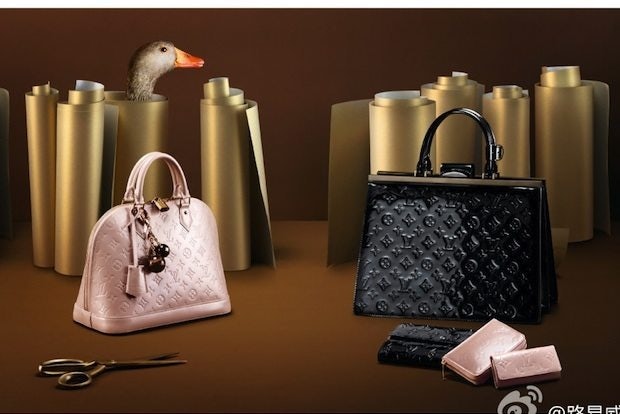
Louis Vuitton is still the most recognized luxury brand in Shanghai. (Weibo/Louis Vuitton)
China’s luxury market may be in slowdown mode, but the average Chinese consumer’s interest in buying luxury remains strong, according to a new report by investment company Exane BNP Paribas. The report analyzes the findings of a survey by digital marketing company ContactLab published in February which found that Shanghai residents spend a significant amount more on luxury goods than New Yorkers.
According to Exane’s analysis, the study confirms Chinese consumers’ ongoing “love affair” with luxury goods, proves that mega-brands like Louis Vuitton are still on top in terms of consumer recognition, and finds that shopping while traveling is much more common among Chinese consumers than New Yorkers.
In order to learn more about what the analysis says about the future of China’s luxury market, we checked in with Luca Solca, the head of luxury goods research at Exane BNP Paribas and author of the report, to hear his thoughts.
Chinese consumers spend much more on luxury goods than New Yorkers at equal income level. Is this only because imported luxury goods cost more in China or are there other factors involved?#
Chinese consumers seem to have a higher appetite for luxury goods—and that is the reason why they spend more per capita (2.5X for handbags, and up to 8-10X when we adjust for differences in income). Luxury consumption in China seems in "catch-up mode"—the reason for the higher appetite may be the recently found wealth, as well as a reaction to enforced equality of the recent past (think of the blue uniforms everybody was wearing).
The report finds that Louis Vuitton, Chanel, and Gucci are among the luxury brands that are most well known in Shanghai. What can smaller brands do to catch up with these established labels?#
Economics are against smaller brands wanting to imitate mega-brands. Luxury is a fixed-cost business: you need to have scale to win the advertising and rental cost race.
The best opportunity for smaller brands is to either position themselves at a higher price point (if they are credible): think of the success of Bottega Veneta, Chanel, Hermes, or enter the market through the accessible price segment: think of Michael Kors, Tory Birch, Kate Spade, Longchamp.
Louis Vuitton and Gucci have both seen slow sales growth rates in China over the past year. We’ve heard a lot of reasons for this, such as China’s anti-corruption campaign, slowing GDP growth, and a shift away from logo-heavy styles. What do you think are the main causes?#
If I was to pick the most important cause is the fact that both Gucci and Louis Vuitton have virtually no more opportunities to open new stores in China. Space growth has been a major driver of top-line growth. Slower GDP growth is also an important factor. We have data that shows slower GDP growth in China is producing a smaller amount of new wealthy people every year; these are the primary consumers of mega-brands like LV and Gucci.
The study finds that Chinese consumers plan to spend more money on luxury goods in the future—is this a good sign that slowing China luxury growth can pick up again?#
I would say so; this seems to indicate that the demand fundamentals for luxury goods in China are still very healthy indeed.
According to the report, Chinese consumers prefer to shop for luxury abroad at much higher rates than New Yorkers. How important will the outbound Chinese tourist market be compared to the domestic market in the coming years?#
I think outbound tourists from China will be more and more important for luxury goods demand. Major price differences persist between China and the rest of the world. These price differences are more and more important, as growth is driven by the middle class (rather than by billionaires, to whom price differences may be less of an issue).